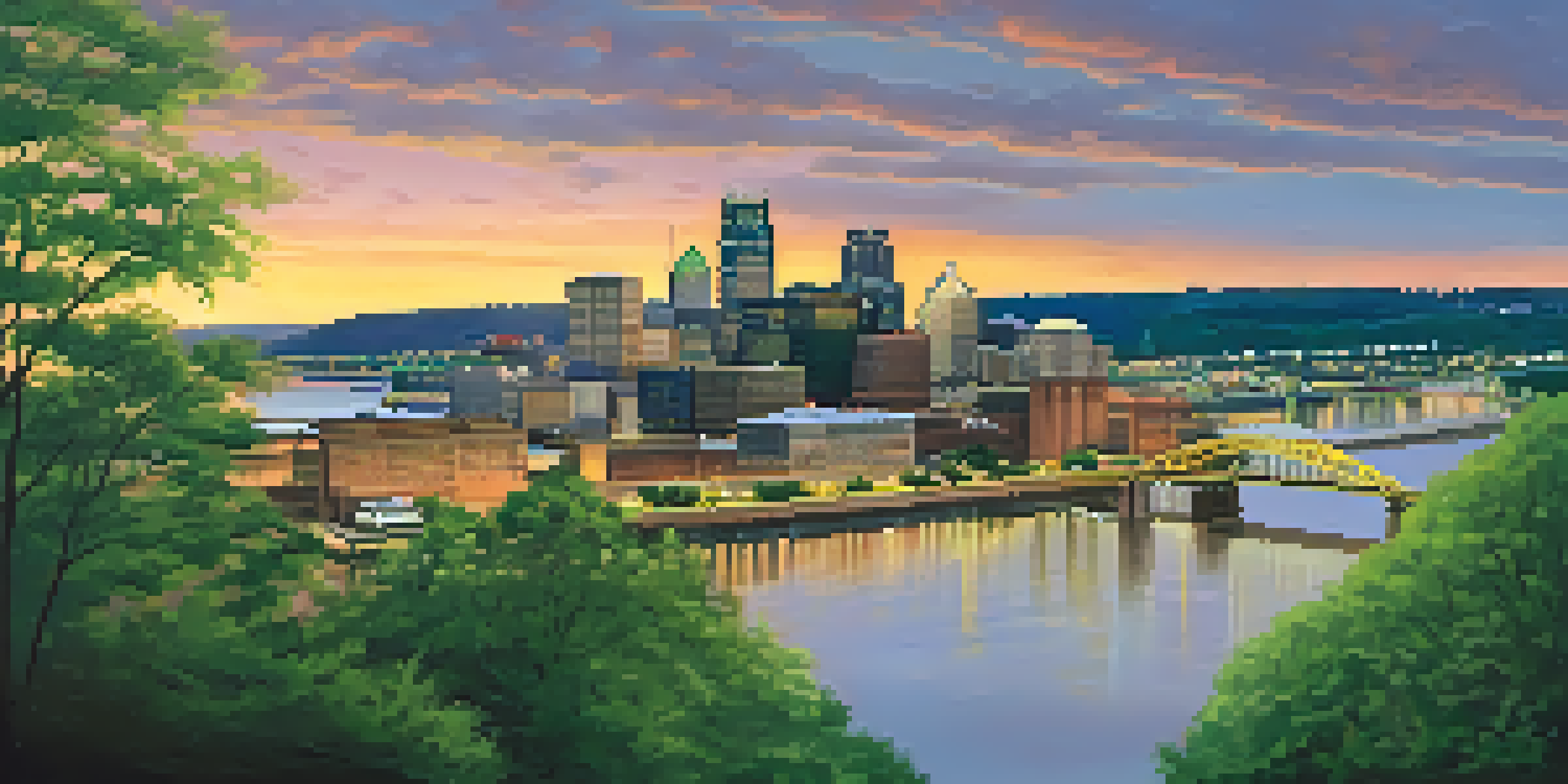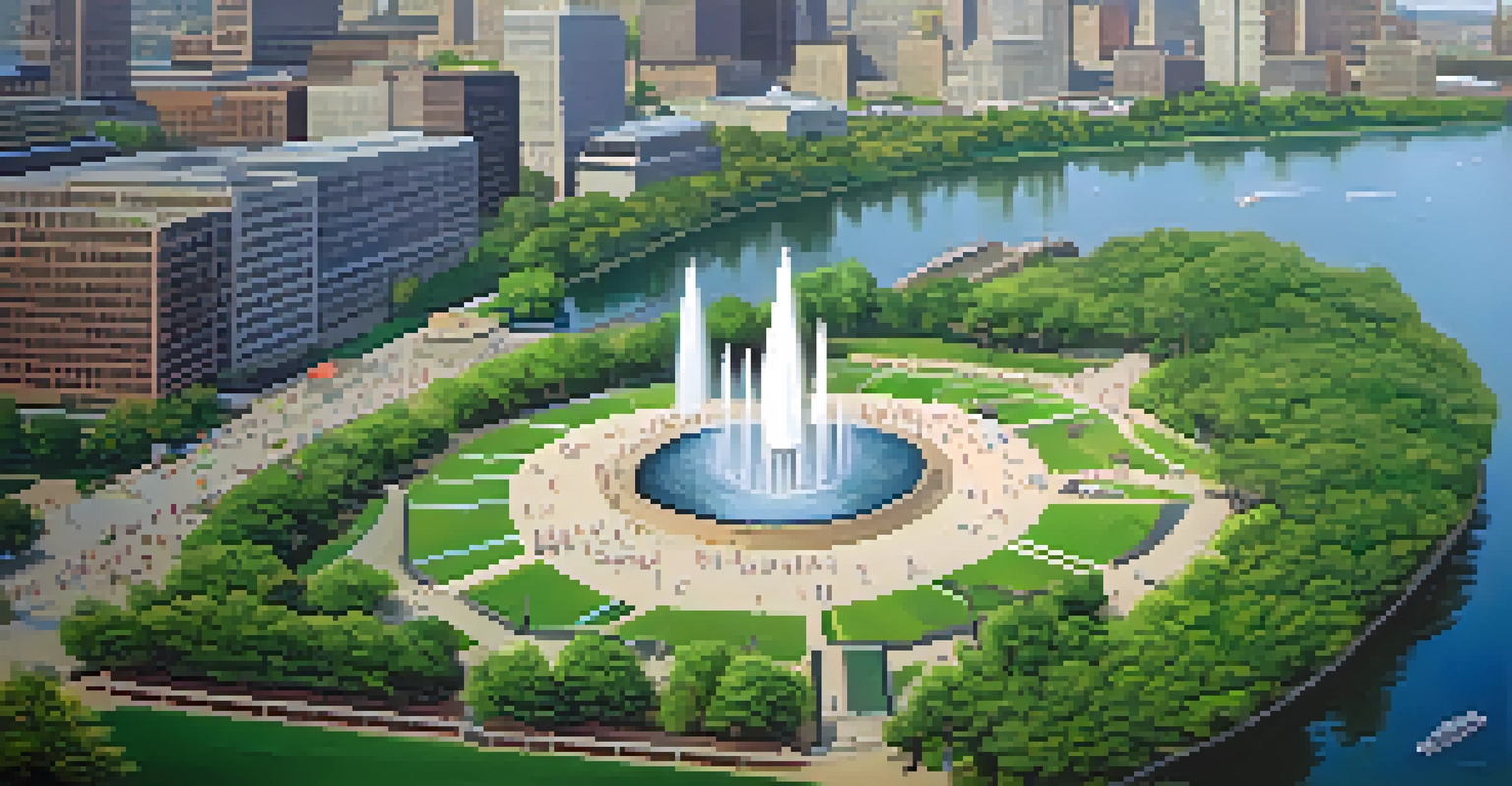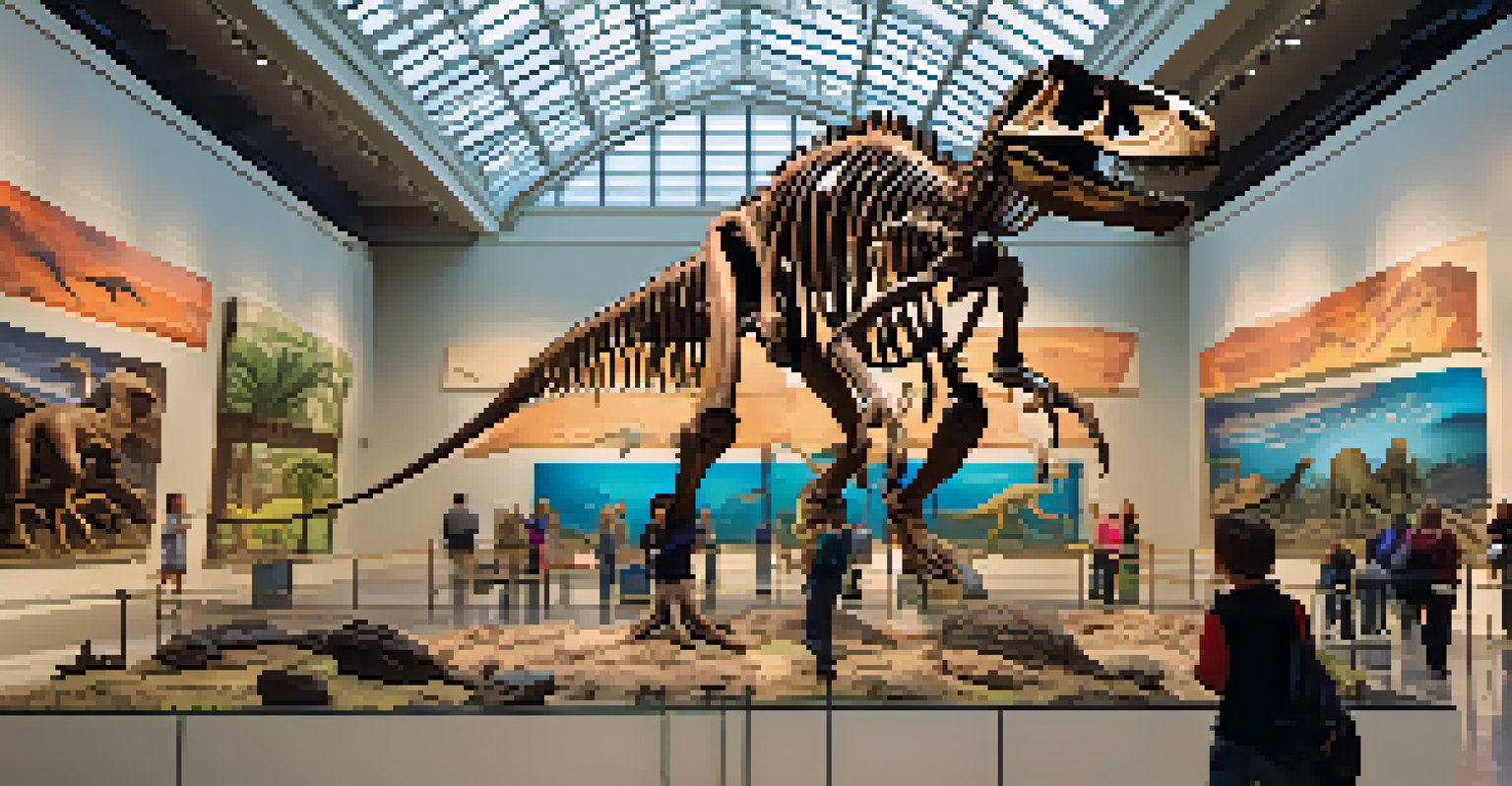Historical Sites in Pittsburgh: A Journey Through Time

The Fort Pitt Museum: Gateway to Pittsburgh's History
Nestled at the confluence of the Allegheny and Monongahela rivers, the Fort Pitt Museum offers a peek into the origins of Pittsburgh. This site, which once housed a vital fort during the French and Indian War, showcases artifacts and exhibits that tell the story of the region’s strategic importance. Walking through its halls, you can almost hear the echoes of soldiers and settlers who shaped this city.
History is not a burden on the memory but an illumination of the soul.
The museum's location is not just scenic; it’s historically significant. It stands where Fort Pitt was constructed in 1758, serving as a military stronghold for British forces. Today, visitors can explore the fort's reconstructed artifacts and learn about the diverse cultures that intersected here, from Native Americans to European settlers.
Beyond the exhibits, the Fort Pitt Museum offers stunning views of the Pittsburgh skyline. As you gaze at the city from this historical vantage point, it’s a reminder of how far Pittsburgh has come while honoring its past.
Point State Park: Where Rivers Meet and History Flourishes
Point State Park is not just a beautiful green space; it’s a historical treasure trove. This 36-acre park marks the spot where the three rivers converge, making it a strategic location for trade and defense throughout history. The park's iconic fountain, which shoots water 150 feet into the air, serves as a stunning centerpiece for visitors.

The park is home to the Fort Pitt Block House, the oldest standing structure in Pittsburgh, dating back to 1764. This stone fortification offers insight into the city’s military history and serves as a reminder of the early settlers' resilience. A visit here can transport you back in time, connecting you with the stories of those who once stood guard over the land.
Pittsburgh's Rich Historical Tapestry
The Fort Pitt Museum and Heinz History Center showcase the city's strategic importance and diverse cultural heritage.
As you stroll through the park, you can enjoy various walking trails and picnic spots, all while surrounded by the whispers of history. It’s the perfect blend of natural beauty and historical significance, inviting everyone to pause and reflect on Pittsburgh's rich heritage.
Carnegie Museum of Natural History: A Legacy of Learning
The Carnegie Museum of Natural History is a vibrant testament to Pittsburgh's dedication to education and culture. Established in 1896, this museum houses an extensive collection of artifacts, including dinosaur skeletons and ancient artifacts from around the globe. It’s a place where history comes alive through engaging exhibits and interactive displays.
The past is never dead. It's not even past.
One of the museum's highlights is the Hall of Dinosaurs, which features a remarkable collection of fossils and life-sized models. This section captivates visitors of all ages, making it a perfect family outing. You can almost feel the excitement of paleontologists as they uncover the mysteries of the past right here in Pittsburgh.
The museum not only preserves history but also fosters a love for science and learning. With ongoing research and educational programs, it continues to inspire future generations, ensuring that the stories of our natural world remain alive and well.
Heinz History Center: A Window into Western Pennsylvania
The Senator John Heinz History Center is the largest history museum in Pennsylvania and a must-visit for anyone interested in the region's rich past. This Smithsonian-affiliated center showcases a diverse range of exhibits that highlight everything from the city’s industrial roots to its cultural milestones. Each exhibit unravels stories that shaped Pittsburgh and its people.
One of the standout exhibits is the Western Pennsylvania Sports Museum, which pays homage to the city's sports legacy. Here, you can explore memorabilia from the Pittsburgh Steelers, Penguins, and Pirates, celebrating the passionate sports culture that thrives in this city. It’s a nostalgic journey for sports fans and an enlightening experience for newcomers.
Architectural Marvels and Nature
Fallingwater exemplifies Frank Lloyd Wright's organic architecture, seamlessly blending with its natural surroundings.
The Heinz History Center also emphasizes interactive learning, making it engaging for visitors of all ages. With rotating exhibits and programs, there’s always something new to discover, ensuring that history remains dynamic and relevant to today’s audience.
The Duquesne Incline: A Ride Through Time
The Duquesne Incline is not just a transportation method; it’s a historical ride that offers breathtaking views of Pittsburgh. Built in 1877, this funicular railway has been transporting passengers up and down Mount Washington for over a century. Riding the incline feels like stepping back in time, as the wooden cars creak and sway, adding to the charm of your journey.
As you ascend, the panoramic views of the Pittsburgh skyline are nothing short of spectacular. The sight of the Golden Triangle, where the rivers meet, is a reminder of how the landscape has shaped the city's identity. It’s a perfect spot for photos and a moment of awe, making the incline a favorite among locals and tourists alike.
At the top, visitors can explore the observation deck and take in the magnificent views while learning about the incline's history. The Duquesne Incline represents not only a means of travel but also a connection to Pittsburgh’s industrial past, showcasing the ingenuity that helped shape this remarkable city.
Frank Lloyd Wright's Fallingwater: Architectural Genius
Fallingwater, designed by renowned architect Frank Lloyd Wright, is a stunning example of organic architecture that harmonizes with its natural surroundings. Located just outside Pittsburgh, this iconic home was built atop a waterfall, creating a breathtaking sight that feels both serene and powerful. It’s often regarded as one of the most beautiful homes in America, embodying Wright's philosophy of blending nature with design.
Visiting Fallingwater is like stepping into a living piece of art. The house features cantilevered terraces and large windows that invite the outside in, allowing guests to experience the beauty of its natural setting. Each room offers a unique perspective of the landscape, making it a captivating experience for architecture enthusiasts and casual visitors alike.
The Strip District's Vibrant Culture
The Strip District transforms from a historical market hub to a lively area filled with restaurants, shops, and cultural events.
The site is not just about the architecture; it’s a lesson in environmental consciousness. Wright’s design emphasizes sustainability and respect for the natural environment, principles that resonate more than ever today. A tour of Fallingwater invites reflection on how we interact with nature, making it a profound experience.
The Strip District: A Blend of History and Culture
The Strip District is a vibrant neighborhood that encapsulates Pittsburgh's historical and cultural evolution. Once the hub of the city’s produce and wholesale markets, this area has transformed into a bustling district filled with restaurants, shops, and cultural landmarks. Walking through the Strip, you can feel the energy and history that have shaped this unique community.
One highlight is the historic Terminal Building, which dates back to the early 1900s and served as a key transportation hub. Today, it houses various shops and eateries that celebrate Pittsburgh's culinary scene. It’s a perfect spot to grab a bite, shop for local goods, and immerse yourself in the lively atmosphere.

The Strip District also hosts a range of cultural events and festivals throughout the year, showcasing the diversity of the community. From street performances to food festivals, there’s always something happening here, making it a dynamic place to explore Pittsburgh’s rich heritage in a modern context.